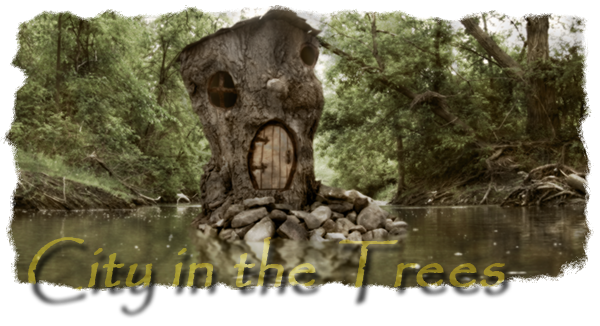Jim over at the stellar Down the Road blog has a fascination with photography, and in particular photographic technology, that always rejuvenates my wonder at the science behind the fun. He puts a spin on it that often emphasizes the history of the craft that's important to remember, and often intriguing, completely apart from the products that come out of such contraptions.
My own emphasis seems to be at the other end of the spectrum. :)
I consider myself a true early adopter of digital photography. I bought one of the first digital cameras available to the public, Kodak's DC25, for about $500 back in early 1997. It was awful, and I knew it. The pictures were way under a single megapixel (the word "megapixel" hadn't even entered the language yet), looked like they'd been shot through a Vaseline-smeared lens, and (the camera having no facility for expanding its memory) at best roughly a dozen "high quality" images could be stored at a time. The camera ate up expensive, non-rechargeable "N" batteries and had to be connected to the computer through the serial port to transfer images. I knew all that... but I loved it anyway. It was a digital camera! No more getting film developed, no more waiting around to see what worked and what didnt'! You took a shot and you could review it right away and if it was garbage, you could delete it... it was like getting back a frame of film, instantly. Aside from those bloody N batteries, once you'd paid for the system, taking pictures was essentially free, and the results were instantaneous. For me, that's when photography first became a viable hobby. And I knew the technology would get better over time.
And wow, did it. I honestly hadn't anticipated just how fast the technology would advance. I went through a few different models of Kodak point-and-shoots, none of them really quite a "real" camera in my mind, till we arrived at the 3-megapixel DC4800. To me, that was my first "real" digital camera. It was still a bit too bulky to carry around — still not a camera eligible for digital lomography (shooting from the hip; "don't think, just shoot"; "Kodak moment") — but as far as I could see, it could do anything a film P&S model could and give results every bit as good. I used that camera for years. I moved on to much more sophisiticated Canon models after that, which I still favour.
One of the things I most cherish about photography, though, is its ability to make the past real. In particular, I absolutely love looking at old photos of places familiar to me. I like to imagine what it would have been like to be there. Even better when I can recreate the shot today and compare and contrast them. The one thing I regret about all that is the limitations of the day. Photos taken before about 1965 are nearly always black and white. And the further back you go, the less detail the photos tend to depict. And in most cases, much before about 1890, photographically, you're out of luck. How I wish people back then had had something like the technology available to us now.
But even today I find the technology lacking in one respect: dimensionality. Even after all this time, we're still dealing with two-dimensional images that fail to adequately convey a sense of expanse, volume, placement in a physical space. I've had this idea of spending time just wandering around, shooting this and that around here, with the vague notion of cataloging it all and maybe one day handing it off to some repository where, someday, someone like me in the future will be able to look at what I saw and compare it with what he or she knows "today"... who knows. Digital photography is great for that, especially combined with geotagging, but it still falls flat where giving a sense of place in the world is concerned. For me, the last great hurdle is providing that third dimension... bringing it all together; colour, quality, and visceral depth.
And now it seems like we're at the threshold at last. Last year Fujifilm announced they'd be marketing a system to take and display (and even print) photographs in three dimensions, as well as to shoot 3D video, and to furnish photographers with a host of other interesting abilities that accrue from having two identical lenses in communication with each other in the same camera. And that camera is the FinePix Real 3D W1. Just as the Kodak DC25 was the camera I was waiting for to begin my hobby as a shutterbug, this camera is the one I've been waiting for to really start recording what it's like to be living in this time and place for people who could never see it otherwise.
Followers of this blog (both of you :) ) will know that I've been dabbling in makeshift 3D photography for two or three years now. One version of this attempt was a split lens for my Rebel XT, which gave good results in some aspects but had two drawbacks... one, the effective width of the shots was akin to shooting through an open door, and two, it relied on having the DSLR with me, which I had to plan for. The other version consisted of what P-Doug refers to as the "cha-cha" method; that is, taking one shot, shifting the camera, and taking another. This has been the method I've relied on most of the time and when it works, gives shots of fairly consistent quality. But the drawbacks here are legion: too large a paralax results in strange exaggerations of depth that must be akin to an acid flashback; some pairs, inexplicably, don't seem to "work" in a believable and satisfying way; and, most limiting of all, any movement whatsoever between the shots renders the pair essentially worthless. This has meant that the technique is effectively useless in any urban setting. There's no point trying to use this technique to show someone living in 2110 what the corner of Yonge and Dundas looked like in 2010. But now, with this camera, that's going to be possible. People walking, cars crossing intersections, even water leaping from fountains, will no longer represent impediments to recording a scene in three dimenions. If anything, they will only enhance the experience.
Some people have, not without reason, expressed reservations concerning the technology. The 3D formats are new, proprietary (which means they may not become universally or even widely usable), and technology-dependent (at least for the moment). These are valid objections, but they're not ones that concern me so long as the images and videos the 3D W1 takes can be exported as paired 2D files. It'll be nice having something in the new format (particularly for archival purposes), but so long as I can still combine two images the way I've been doing it for the past couple of years, that's all I'm worried about. I've gotten some pretty satisfying results from the cha-cha with the S80 and G9 (and even the infrared S70)... imagine how much better the results would be if the two images are simultaneously recorded, and exactly the right paralax.
Aside from shooting real 3D, the 3D W1 offers other intriging abilities: shooting colour and B&W at the same time, videoing and shooting still images of the same scene at the same time, and taking two simultaneous images to be stitched together into a single, extreme wide-angle shot. These are all things I've wanted to do in the past, and now they become possible.
The word is that this system (camera, viewer, and send-away printing) will be available in September for something in the neighbourhood of a thousand dollars US, which, at a guess, with the exchange and inevitable mark-up, will probably price it around $1200-1250 Canadian. This is something I'd really like to get my hands on. I haven't really wanted a particular system in this way since back in the days I was waiting for the first DSRL — a real real REAL digital camera — to make its debut. I want to put some money aside and get this thing and start really recording southern Ontario in all its spontaneity and full aspect. This is where I've wanted to go all along, and they've finally built me a road.
Thursday, August 06, 2009
Where I want to go next...
Labels:
3D,
digital photography,
FinePix Real 3D W1,
Fujifilm,
photography
Subscribe to:
Post Comments (Atom)



1 comment:
Thanks for the hat tip!
I remember when I was dating my now ex-wife in about 1993, she was in the Air Force and was the base photographer. She was playing with digicams even then and told me that at any resolution you could see pixellation. Given that she needed to do enlargements a lot, that wasn't going to work. It's hard to believe digicams have come so far in so little time.
I am absolutely with you on making the past real. I love to do "then and now" shots, using old photographs as the basis. I had the opportunity to do some of that on my Michigan Road adventures last summer.
I wish you well on your 3D adventures. I'm going to have to sit them out, unfortunately, as because of an eyesight problem, I don't see 3D. Never have; don't know what I'm missing!
Post a Comment